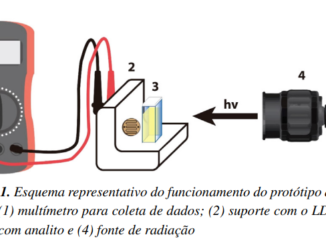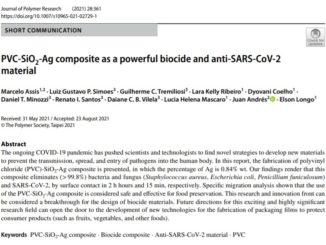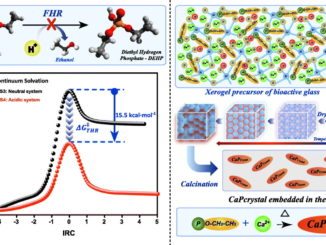
UV–Vis spectrophotometry coupled to chemometric analysis for the performance evaluation of atrazine photolysis and photocatalysis
Abstract: In this study, a spectrophotometric-chemometric (Spec-Chem) approach was applied as an alternative to chromatography to monitor ATZ and by-products after photolytic and photocatalytic oxidation aiming to unveil the ATZ degradation mechanism. Spec-Chem is an accessible, easy-to-operate, low-cost analytical approach to monitor atrazine (ATZ) and by-products, and its applicability was validated by HPLC, the reference technique for the evaluation of pollutant degradation mechanisms. The chromatographic (DChro) and spectrophotometric (DSpec) data found 95% and 57% ATZ removal after 30 min, respectively, proving that the DSpec erroneously induces a 38% loss in removal efficiency. When DSpec was treated by multivariate curve resolution (MCR) analysis for providing chemometric data (DChem), it found ATZ removal and hydroxyatrazine (HAT) formation statistically equal to DChro (t-test, p = 0.05). After unraveling the ATZ degradation mechanism using Spec-Chem, a new hypothesis for the kinetic calculation of ATZ degradation was presented, where the concentrations of ATZ and HAT were used to find k and R2 values representative for the ATZ degradation mechanism. The values found for k were compatible with the literature under similar conditions of ATZ degradation, and the linear correlation coefficients (R2 = 0.99) showed an optimal fit for the proposed hypothesis. Thus, Spec-Chem was successfully applied to unravel the mechanism of photocatalytic degradation of ATZ in the presence of TiO2, while k was obtained by the new hypothesis proposed that considered ATZ and HAT concentration as parameters of kinetic interest. Therefore, the importance of monitoring quantitatively ATZ and HAT were provided in this study, providing new information for the scientific community.
Author(s): Ailton J. Moreira, Sherlan G. Lemos, Dyovani Coelho, Lucia H. Mascaro, Gian P. G. Freschi, Ernesto C. Pereira.
Environmental Science and Pollution Research
(2021)
DOI: https://doi.org/10.1007/s11356-021-17687-w
CDMF
The CDMF, hosted at the Federal University of São Carlos (UFSCar), is one of the Research, Innovation and Dissemination Centers (RIDC) supported by the São Paulo State Research Support Foundation (Fapesp), and also receives investment from the National Council Scientific and Technological Development (CNPq), from the National Institute of Science and Technology of Materials in Nanotechnology (INCTMN).




